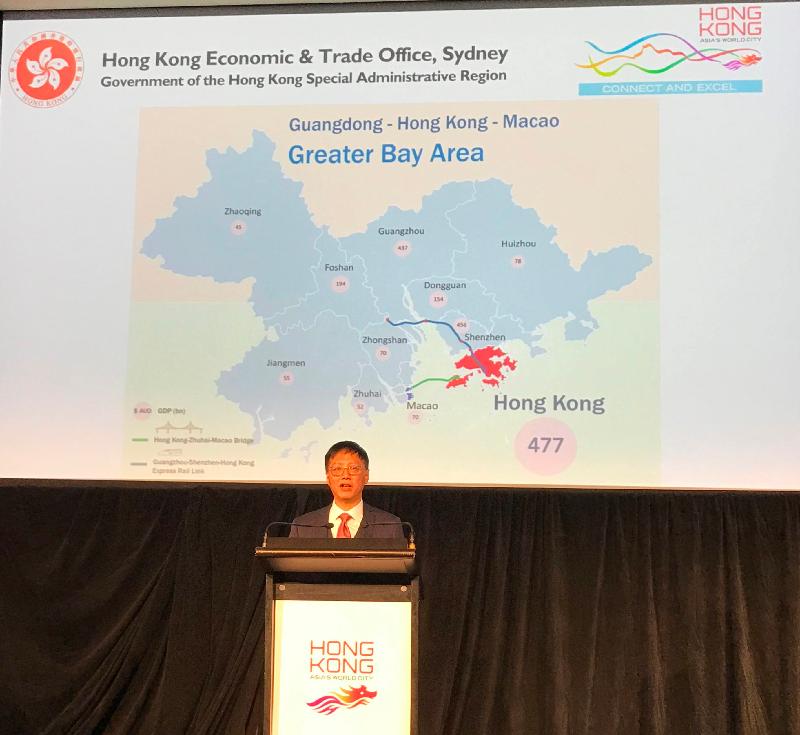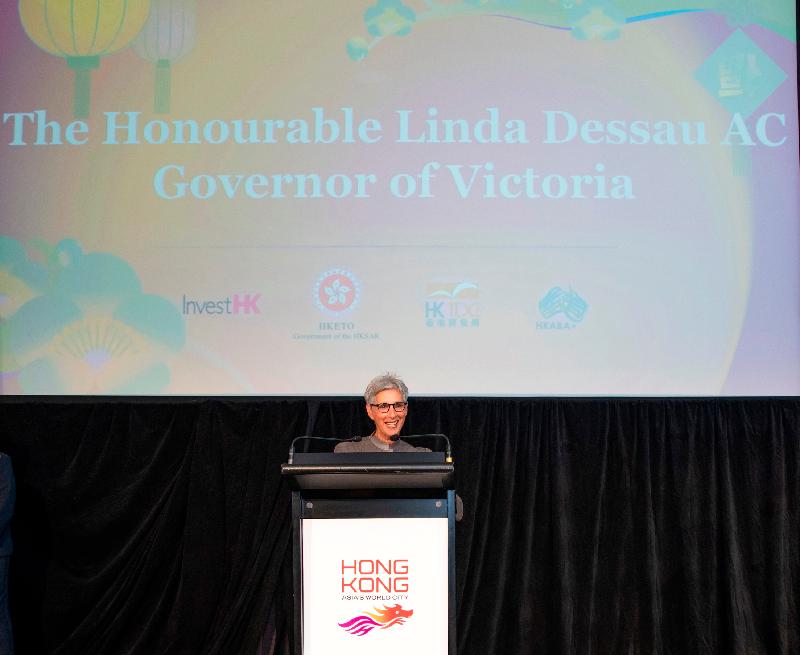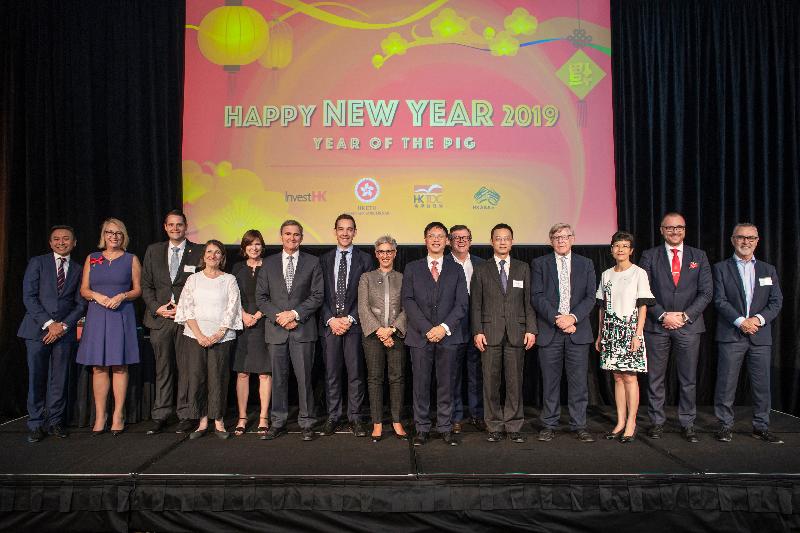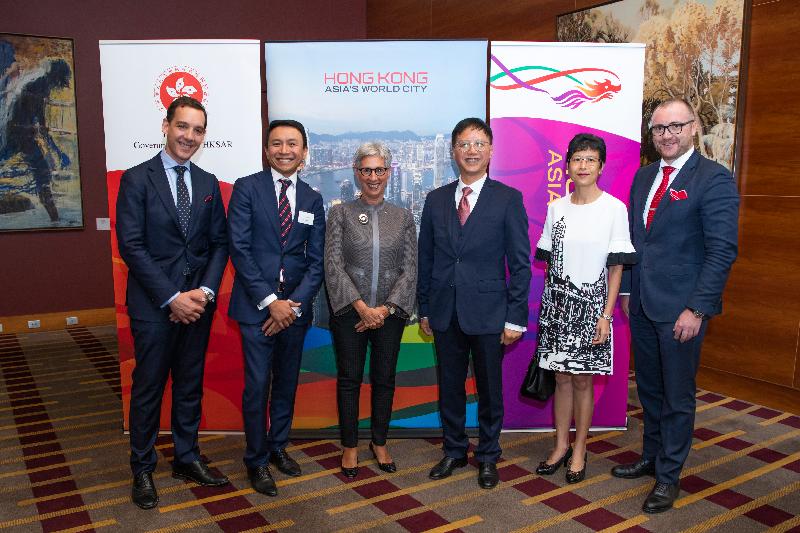Following is a question by the Hon Jimmy Ng and a written reply by the Secretary for Development, Mr Michael Wong, in the Legislative Council today (February 27):
Question:
Some operators of small and medium enterprises (SMEs) have relayed that the high rents and prices of shops and offices have exerted tremendous pressure of operating expenses on them, and dampened foreign investors’ desire to set up regional headquarters and offices in Hong Kong. In this connection, will the Government inform this Council:
(1) whether it knows, in respect of Grade A and Grade B private offices in the four districts of (a) Central, (b) Wan Chai and Causeway Bay, (c) Tsim Sha Tsui and (d) Hong Kong East, their respective (i) vacancy rates, (ii) per-square-foot median monthly rents, and (iii) average per-square-foot prices, in each month from January 2014 to January this year;
(2) whether it has examined the impacts of the supply of private offices of various grades on the levels of their prices and rents in the past decade; if so, of the details; if not, the reasons for that;
(3) of the projected supply and demand situations of various grades of private offices in the coming decade;
(4) of the projected commercial space to be provided in the third Core Business District on the proposed artificial islands to be formed by reclamation in the Central Waters, with a breakdown by the uses thereof; and
(5) of the specific strategies put in place by the Government to increase the supply of commercial space, so as to mitigate the forces that drive up the rents and prices of shops and offices, thereby alleviating the pressure of operating expenses faced by SMEs and attracting more foreign investors to set up regional headquarters and offices in Hong Kong; the relevant work plans and timetable?
Reply:
President,
To sustain Hong Kong’s position as an international financial and business centre, the Government strives to provide commercial land and floor space. My answers to different parts of the question are as follows:
(1) Year-end vacancy rates of private offices in Central, Wan Chai/Causeway Bay, Tsim Sha Tsui and North Point/Quarry Bay provided by the Rating and Valuation Department (RVD) are set out in Annex 1.
Please refer to Hong Kong Property Review (Note 1) prepared by the RVD for average monthly rents and prices of private offices in Hong Kong. The relevant average rent and price were analysed for general reference only, which were not intended for applying to any particular property. The levels at a certain period depended to a large extent on the characteristics of the premises (including building quality and location) leased or sold during the period. As such, the changes between different periods might be due to variations in the characteristics of the properties being analysed, and should not be conclusively taken as indicating a general change in value over the period. Moreover, some figures were derived from limited number of transactions. Rental and price indices should be comparatively better in reflecting the change in value. Notwithstanding that, average monthly rents and prices of private offices in Central, Wan Chai/Causeway Bay, Tsim Sha Tsui and North Point/Quarry Bay provided by the RVD are set out in Annex 2 for easy reference.
(2) The RVD’s information about private offices of various grades in terms of stock, price indices and rental indices in Hong Kong over the past 10 years is set out in Annex 3.
According to the information in Annex 3, there was an increase in the stock of private offices over the years, albeit marginally. The price and rent were rising continuously, indicating apparently that office supply could not fully meet the demand, and that the scarcity of land in Hong Kong was affecting the supply of economic land including offices. In last week’s response to the report made by the Task Force on Land Supply (TFLS), the Government pointed out that our core strategy is to increase land supply on a sustained basis to avert the current stalemate of land demand-supply imbalance.
(3) To supplement the review of the territorial development strategy (i.e. “Hong Kong 2030+: Towards a Planning Vision and Strategy Transcending 2030” (HK2030+)), the Planning Department completed a consultancy study on the “Review of Land Requirement for Grade A Offices, Business and Industrial Uses” (the Review) in end-2016. Apart from Grade A offices, the Review estimated also the supply of and demand for land in respect of general business (including non-Grade A offices) and industries. The details are shown on the consultancy report of the Review (Note 2). According to the estimate set out in the Review, if all committed and planned developments would materialise fully, there would be a deficit of 480 000 square metres of gross floor area (GFA) for Grade A offices in core business districts (CBD) in the next 10 years (from 2014 to 2023). In the long term (up to 2041), there would be a deficit of 1 million sq m of GFA in respect of CBD Grade A offices.
Long-term planning is very important to the future development of Hong Kong. Therefore, in response to the TFLS’s report, the Government has proposed that the Steering Committee on Land Supply (the Steering Committee) chaired by the Financial Secretary, upon its forthcoming expansion, would adopt a vision-driven and forward-looking approach in re-assessing land demand for all needs of Hong Kong (including economic needs). In so doing, the Steering Committee would take into account the space required to maintain our economic competitiveness and other strategic considerations, and would consider accordingly the scale of a land reserve that we should target to keep. The revised assessment would be incorporated into the final strategy for HK2030+ Study to be released in the latter half of 2019.
(4) As part of the strategy of Lantau Tomorrow Vision, the proposed third CBD, developing on the 1 000 hectare-artificial islands near Kau Yi Chau, would have its locational advantage. At a location of only about 10 kilometres from Central, and connected with strategic transport infrastructure, the artificial islands would complement the traditional commercial centre in Hong Kong Island to form a metropolitan business core, and create a synergy with the Aerotropolis in Lantau with economies of scale and clustering effects. The third CBD would be established as a financial and industrial/commercial supporting service hub, closely connected with the Hong Kong International Airport. Besides, smart, innovative and quality new offices would be delivered on the artificial islands to provide ample development space to support traditional and emerging industries, and to help achieve a more balanced overall spatial development pattern of Hong Kong.
We initially propose that the third CBD would provide a commercial floor area of about 4 million sq m, comprising not only Grade A offices, but also hotel, retail, dining and other uses, to create a vibrant new business area with comprehensive supporting facilities. The specific development parameters the third CBD, including the floor area of individual uses, are subject to further studies.
(5) One of the strategies to increase the commercial floor space supply is to convert land within developed areas into uses that facilitate future economic development through rezoning and policy or financial incentives. For example, we are expediting transformation of Kowloon East into the second CBD. Kowloon East currently has over 2.6 million sq m of commercial/office floor area. It is anticipated that Kowloon East has the potential of supplying about 4.4 million sq m of commercial/office floor area additionally in future, including about 1.05 million sq m of commercial/office floor area in the next five years in respect of private development projects including new developments, redevelopments and wholesale conversion.
We would also continue to put up commercial sites for sale in an orderly manner, through the Land Sale Programme announced annually, to meet the market demand. Over the five recent financial years (i.e. 2014-15 to 2018-19), the Government sold 15 commercial/business sites through the Land Sale Programme, providing about 776 000 sq m of floor area. In the coming few years, we are expected to put up a number of commercial sites for sale including those located at the topside of Hong Kong West Kowloon Station of Guangzhou-Shenzhen-Hong Kong Express Rail Link, Kai Tak Development Area, New Central Harbourfront, Caroline Hill Road, and Queensway Plaza to increase commercial floor area gradually, and to address economic development needs of the community.
Besides, 133 applications (Note 3) have been approved under the previous revitalisation scheme for industrial buildings (IBs). With gradual completion of conversion or redevelopment works since 2012, more than 2.1 million sq m of floor area for different non-industrial uses, including 1.9 million sq m for commercial uses including shops and offices could be delivered. And we are now reactivating the revitalisation scheme for IBs. We would, as before, encourage owners to undertake wholesale conversion of IBs through exemption of waiver fee. In addition, we are relaxing the maximum permissible non-domestic plot ratio, as a matter of policy direction, to allow an increase of up to 20 per cent for eligible projects to incentivise redevelopment of IBs and increase the supply of commercial floor space.
Also, we are reserving some new land developed in the New Development Area projects for economic uses. Apart from developing the third CBD on the 1 000 hectare-artificial islands near Kau Yi Chau as mentioned above, we would reserve land when planning the major development projects in Tung Chung New Town Extension, Kwu Tung North and Fanling North, Hung Shui Kiu, Yuen Long South, etc. in accordance with the development direction and spatial pattern of Hong Kong’s future economy, which would provide about 3.5 million sq m of GFA for commercial uses. This would not only meet the needs of our economic development, but would also seek to achieve a jobs-housing balance as far as possible.
Note 1: Accessible on RVD’s website: www.rvd.gov.hk/en/publications/index.html
Note 2: Accessible at the following link: http://www.hk2030plus.hk/document/Review%20of%20Land%20Requirement%20for%20Grade%20A%20Offices_Business%20and%20Industrial%20Uses(Eng)_FCR.pdf
Note 3: These exclude applications withdrawn and terminated by applicants. read more





